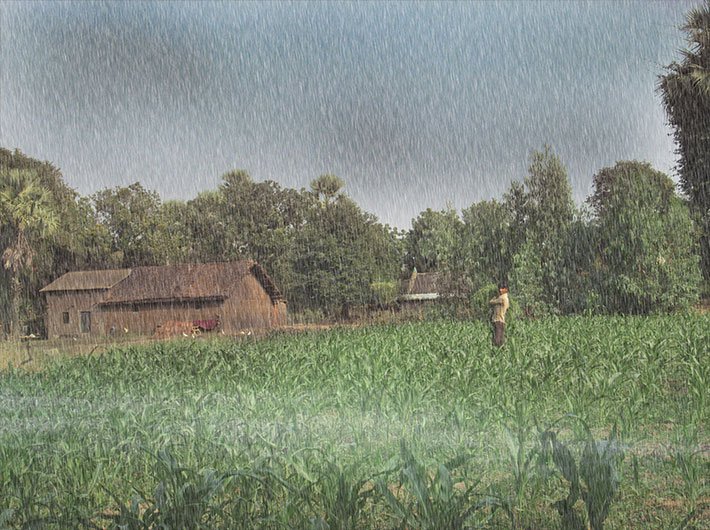Bad news is good news; media revel in news of crisis and catastrophe. No news is bad news; some space has to be filled with news if anyone is going to look at accompanying views and ads. But if there is no news, pseudo-news can be invented, also known as speculation. Speculation is possible all round the year on weather, for luckily, India is situated far enough from the equator to have pronounced seasons.
In Fiji, where I taught for some years, the temperature was tolerable – 25 to 30 degrees – all the year round. The only variation was in sunshine and rain; but one never knew which would come and when. People just ran for cover when it rained; no one talked about the weather.
The climatic uncertainty was perfect until the discovery of the little boy in the Pacific. Actually, he has been known since the 1600s, when Spanish mariners tried to sail across the Pacific and got some scares. They associated the storms with hot Decembers, which they associated with unusually warm water in the Pacific. Even now, some imperfect Christians exclaim “Jesus!” when they get a surprise. At that time, the sailors exclaimed “El Niño!” (“Little Jesus”). So the sequence of hot waters and bad weather came to be known as El Niño. In more clement years, they found the Pacific water to be colder than usual; those years were associated with lower temperatures and better rains. They called the phenomenon El Viejo (the old man) to start with, but later changed over to sexier La Niña.
Human curiosity is infinite, and scientists are under tremendous pressure to write and publish papers. So once the two kids were found in the Pacific, climatologists started looking for them in the Indian Ocean. They found one, but did not give it a romantic name: they called it Indian Ocean Dipole. It is the difference in temperature between the western and the eastern Indian Ocean. The difference happens to be low this year, and the sea around Indonesia is quite warm. This is what the meteorologists associate with a weak monsoon. More accurately, they attach a 1 per cent probability to a very wet monsoon, and another 3 per cent to rains being above normal. They think it is 28 per cent likely that the rains will be normal. That implies a probability of over two-thirds that the rains will be below normal. There is one-third probability that they will be more than 10 per cent below normal. The meteorological office is very solid, very conservative. Its meteorologists write serious, unreadable papers in scholarly journals. Its forecast is that overall rainfall will be 88 plus or minus 4 per cent of normal.
But now we have a choice – a company that sells crop insurance and other services that require weather forecasts. Government meteorologists will continue to get their salaries whether they get their forecasts right; those who work for Skymet cannot be so sure. It sells its forecasts, and will have no market for them unless they turn out to be right most of the time. Its forecast is that the rainfall will be 102 plus or minus 4 per cent. According to it, there is a 49 per cent chance that the monsoon will be normal (95-105% of long-period average), 25 per cent chance that it will be 105-110% of the mean, and 16 per cent chance that it will be 90-95% of the mean. And even more important, June and July will see better-than-normal rains; August and September will be below normal. June and July are the months when crops are planted and must be adequately watered; it matters much less how much water they get in the later months.
So good kharif is very likely; instead of worrying about drought, we should be concerned about bursting government foodgrain stocks. Stocks of rice are lower than normal this year – about 16 million tons in June. Still, the incipient monsoon will add another 20 million tons or so, so there is nothing to worry about.
However, Skymet’s forecast of regional distribution of rain is not so sanguine; it predicts drought in Tamil Nadu and Karnataka. And it has no forecast for Gujarat and Rajasthan, which normally get little rain. Those are the areas on which governments should concentrate; farm incomes may fall there, and the population may have to be provided with water during next summer. Overexploitation has led aquifers to dry up in many areas of India; we need to develop the technology of recharging them. It basically involves damming water in small reservoirs in soils where it is more likely to permeate to the aquifers. It is not rocket science, but we still need to learn it and invest in it.
(The article appears in the June 1-15, 2015 issue)

